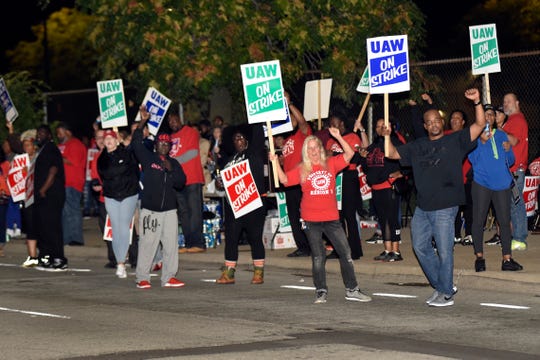
Dear Commons Community,
For the first time in twelve years, the United Automobile Workers union went on strike against General Motors, sending nearly 50,000 members at factories across the Midwest and South to picket lines this morning. With the two sides far apart in the talks, U.A.W. regional leaders in Detroit voted unanimously yesterday to authorize the strike, the union’s first such walkout since 2007. It began at midnight, after the union’s current bargaining agreement expired on Saturday. As reported by the New York Times:
“Today, we stand strong and say with one voice, we are standing up for our members and for the fundamental rights of working-class people in this nation,” Terry Dittes, a union vice president, said after the meeting.
The U.A.W. is pushing G.M. to improve wages, reopen idled plants, add jobs at others and close or narrow the difference between pay rates for new hires and veteran workers. G.M. wants employees to pay a greater portion of their health care costs, and to increase work-force productivity and flexibility in factories.
Although the company has been earning substantial profits in North America — and it made $8.1 billion globally last year — it has idled three plants in the United States as car sales slide and overall demand for vehicles weakens.
The strike is unfolding as President Trump’s trade war with China wears on manufacturers and has stirred fears of a slowdown.
It could disrupt local economies in factory towns in several swing states like Michigan and Ohio, where President Trump has promised to increase manufacturing jobs. But any impact on the broader economy will depend on how long it lasts.
The auto industry, even if it is far from its employment heights in the 1970s, remains crucial to the economy, counting some 220,000 people who work to manufacture cars. According to the Alliance of Auto Manufacturers, the broader vehicle industry supports 9.9 million jobs and historically accounts for about 3 percent of gross domestic product.
Even as the unionized share of the nation’s work force continues to fall, down from a peak of one-third in the 1950s, labor has become more assertive in recent years.
The number of people who participated in work stoppages involving over 1,000 workers rose last year to its highest level since the 1980s, buoyed by teacher walkouts and a multi-city hotel workers strike.
Polling data shows that the public has become increasingly supportive of organized labor. A Gallup poll in late August found that 64 percent of Americans approve of unions, up from below 50 percent a decade ago.”
This might be a long strike given the gap in the negotiating positions between the U.A.W. and General Motors.
Tony


